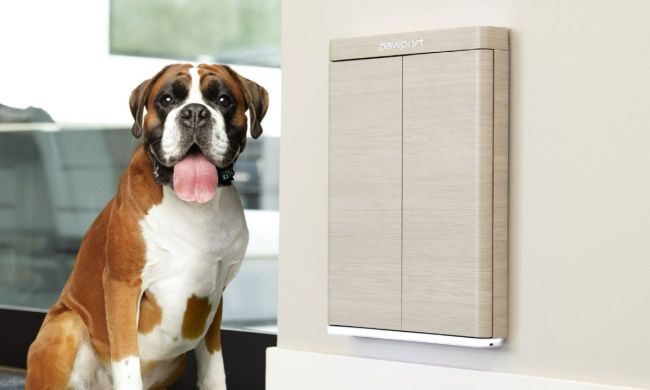There are all kinds of places it makes sense to add smart home technology. Smart lights are easy to control and you can automate them to make it seem like you’re home even if you’re not. Smart digital assistants can play music and answer questions for us, as well as control other smart products. Home automation in general just helps life run more smoothly — but there are also places where smart home technology has yet to catch on. Smart toilets are not yet in demand, and for the most part, smart appliances haven’t evolved to reach their full potential yet either.
So what, then, should we make of the smart refrigerator?
Why get a smart refrigerator?
Believe it or not, the original so-called smart fridge goes back to the late 1990s or early 2000s. Clearly, the concept has not really caught on, since in the two decades since, sales of smart refrigerators are still well behind their boring counterparts. So are these devices actually worth it, or are they just a gimmick? To evaluate that question, let’s take a look at some of the key features of a smart fridge and see if they truly make life better.
Touchscreen technology and home hub
Most smart refrigerators, like the Samsung Family Hub, offer some type of screen technology, usually touchscreens. On these interfaces, you can (depending on the brand) watch TV, see video recipes, view family calendars, add items to a grocery list, or leave a note for a family member.
If you’re thinking, “can’t I do that stuff on literally any other smart screen in my house?” — or with a Post-It — the answer is yes. Smart digital assistants with screens like the Amazon Echo Show lineup, or Google Nest Hub devices, all offer touchscreen technology that can execute nearly any smart home command, including the ones listed above. As a bonus, you can place them anywhere, and several models like the Echo Show 10 will actually track you around the room, keeping your video chat, Bridgerton episode, or recipe in view. With your fridge, that’s obviously not an option.
Adding a touchscreen to a refrigerator seems at best superfluous and at worst like adding pockets to a wheelbarrow.
Internal cameras
Some of the newest models of smart refrigerators (including recent iterations of LG’s InstantView models) are equipped with cameras on the inside. The rationale for this is that if you’re already at the grocery store, you can access these cameras via your home’s Wi-Fi connection and see if you’re out of butter or eggs or whatever else.
In the interest of full disclosure, I’ve not had an opportunity to test this out. I’d hope there’s lighting that comes on inside when the cameras are accessed, and that the cameras have some kind of pan or tilt ability; otherwise, you can only see what’s sitting in front of the camera. This is a great idea in theory, though I’d love to hear from anyone out there to learn if this actually works well in practice.
There are also external devices (Smarter makes FridgeCam) you can get for your fridge that will take snapshots of the inside of the fridge every time you open the door, so if you are desperate to have this kind of surveillance over your salmon, it’s available (though it pays to read ratings and reviews.)

Automatic grocery ordering
Automatic grocery ordering, like flying cars, is an aspect of smart fridge technology that we’ve been promised for years but has never been properly executed.
Smart auto ordering is supposed to take stock of bar codes as they come into or are removed (and tossed out) from the fridge, then link up to your local grocer to order milk when you run low or run out.
Not surprisingly, for this to actually work, it hinges specifically on where you live, the grocery chains in your city, their connectivity with your particular brand of fridge, and the ability to deliver in this supply chain-challenged world. As far as I can tell, this type of technology has never been properly rolled out at any kind of scale in North America. Plus, how would we manage this? Could the fridge be set up to order coffee cream and have it delivered the same day when you get low, but add all the other lower-priority items to a weekly delivery list? Smart fridge life is getting complicated.
Knock-knock. Who’s there? It’s your refrigerator …
Another neat feature of some smart refrigerators and other smart appliances is that they can do things for you when you tap on their exteriors.
My Aunt’s Miele dishwasher, for example, has no handles or buttons; a quick double-knock on the door, and it opens like a drawbridge.
Admittedly, this is clever for party tricks, but in day-to-day practice, it’s actually quite annoying. Tap-tap. Wait. Opeeeen. If I had a handle to grab, the door would already be ajar, and I wouldn’t have raw knuckles.
Similarly, LG’s InstaView line of refrigerators will turn on a light and illuminate its door-in-door so you can see what’s there when you knock twice on the door. Again, a great trick to impress friends, but chances are if I want to see what’s in the fridge. I also want to get what’s in the fridge, and then I’m opening the door anyway, either to grab the item or to see where it actually is, if it’s not in the little display window in the door. The spotlighting seems unnecessary.
Related to this, some fridges claim to open the door for you automatically. In the case of LG’s smart fridge, you put your foot in front of a light on the floor and A.I. technology can detect if it’s human or pet, opening the door for you, but barring Fido. This type of technology was added so that if you have your hands full, you can still get into the fridge. Sort of. For starters, it only barely cracks the door (at least when I viewed this at CES), so you still need a hand to pull it the rest of the way open.
Plus, this technology is indeed impressive in an automobile when you may be carrying a bunch of stuff and have nowhere to set it down to open your trunk. But in the kitchen, where you have literally nothing but places to set stuff down (counters, tables, chairs, bar), is this really necessary?
Filter alerts, maintenance, troubleshooting
Many smart fridges, as well as smart dishwashers, use their Wi-Fi connections for a particularly useful feature: Alerting you about things you need to know.
I own a smart dishwasher and while it doesn’t let me peer inside during the rinse cycle, it does send me a push notification when the dishwashing cycle is done or when the rinse aid runs low.
Similarly, smart notifications about fridge maintenance are a useful tool. For instance, if the ice maker water filter needs changing, a push notification can be handy (because otherwise, who ever thinks about changing that filter?)
When something goes wrong with your fridge, a smart fridge is better equipped to help diagnose the trouble. It’s possible to hold your phone up to a fridge (or my dishwasher) and get error codes or information about what exactly is wrong. This is a great benefit since it could mean the difference between one or multiple service visits from a technician.
Price and value
When smart fridges first launched, they were expensive, costing hundreds, or in some cases thousands, more that a regular refrigerator. Today, these smart appliances have come down substantially in cost and are now comparable to a regular fridge. Does that make it worth it?
Not for me.
Sure, some smart features can be handy, like Wi-Fi diagnosis. But others, like having a small TV screen on the door and knock-knock features, are really just a joke.




